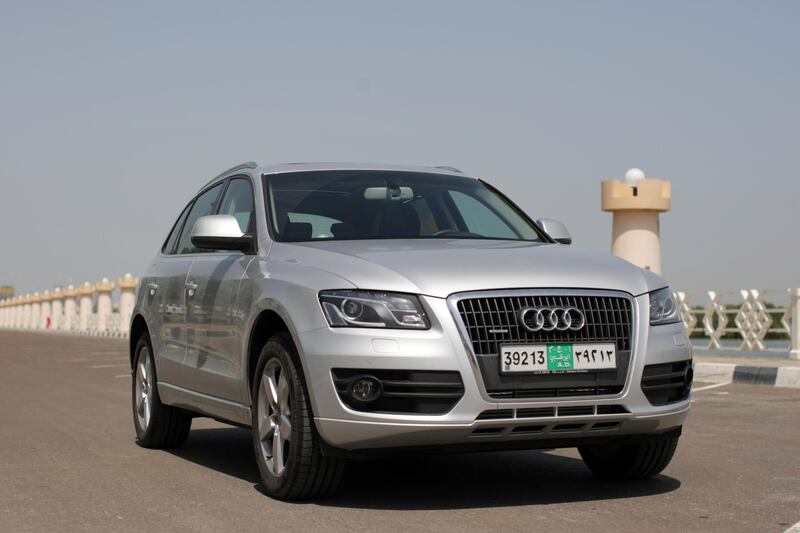Just a while back, I had a chance to drive Audi's petite but luxurious Q5 entry into the luxury crossover segment and came away impressed. I had determined then that Audi's long-suffering mid-range V6, the 3.2L FSI, had finally lived up to its promise, so the quest for the best of Audi's Q5 should have been over. Test done, Dave, move on.
But that was before I had driven the latest rendition of Audi's signature powerplant, the 2.0T. For those not familiar with the ubiquitous little four-banger, it has appeared, in one guise or another, in virtually every Volkswagen product save the Audi A6; and I'll probably even be corrected on that. It's an undersquare - that's geek-speak for the bore being smaller than the stroke - double overhead camshaft inline four. Nothing extraordinary about that, except Audi then turbocharges the snot out of it, this version of the 2.0 boasting about 13.7 psi of boost.
For good measure, Audi then throws in its FSI direct fuel injection, which, as the name suggests, injects fuel directly into the combustion chamber rather than into the intake manifold. Turbocharged engines especially like the direct fueling route because the one drawback of pressurising the intake system for more power is that it also generates more heat in the manifold. Pump gas into this now superheated chamber and then direct it to the inside of the combustion chamber and the whole mess goes kablooey (that's tech speak for the combustion process) prematurely in a devastating process called detonation.
Old-time turbocharged engines got around this by lowering the compression ratio in the cylinders. This doesn't affect top-end power, because at peak revs the turbocharger is literally jamming fuel into the engine, circumventing any lethargy that the low compression ratio otherwise might engender. But, at low speeds, before the turbo spools up (gearhead-speak for rotating at optimal speed), the engine was essentially just a normal four-banger, the reduced compression wreaking havoc with low-rpm torque. A little 2.0L four is anemic enough when compression is high; reducing it really takes the edge off. Low compression (8.0:1 was typical) was largely responsible for the dreaded turbo lag that was the bane of boosted engines.
Coming back to the main plot: injecting the raw fuel directly into the combustion chamber at the very last moment gives it no chance to overheat, thus preventing the previously mentioned, piston-melting detonation. That means - and thankfully Dave is finally getting to the point - that a direct-injected engine can maintain a relatively high compression ratio (the 2.0T runs 9.6:1) even when it is turbocharged. All of the top-end power with none of the lag down low.
And, indeed, you can feel that low-end pulling power when you're driving the 2.0T version of the Q5. In this guise, the 2.0L gathers up its 350Nm of torque as low as 1,500 rpm (the 2.0T's maximum horsepower of 211 is attained at a diesel-like 4,300rpm as well), very ably emulating a V6. Actually, even in its new and improved format, Audi's 3.2L V6 can't match the 2.0's off-idle punch. Mated, as it now is in the Q5, to Audi's new eight-speed automatic, the 2.0T's revs are kept surprisingly low and yet it responds to calls for forward motion quickly. Really, you could drive the Q5 hard all day and seldom get the little engine above 4,000rpm, so perfectly matched are the 2.0T's torque curve and the gears in the close-ratio, eight-speed automatic trannie. Many manufacturers have tried to match the 2.0T's combination of sophistication and urge in a small four-cylinder format; none have yet succeeded.
The rest of the Q5 is pretty much as I had driven recently. I did notice, however, that thanks to the addition of the Audi Drive Select system - it provides customisable control of the Q5's steering, suspension, etc - the steering was a bit more precise and roll just a smidgen reduced. Indeed, the chassis emulates the engine's performance: capable beyond its genre and pushing the expectation envelope.
As for the interior, it is, as with all Audis in general and the Q5 in particular, hedonistic even beyond its already premium price tag. Audi continues to impress by building incredible interiors that confound rival manufacturer's auditors. If Audis ever become as reliable as Lexus, the rest of the premium segment is going to be in trouble.
As it is, the Q5 in this exact guise - 2.0T with the Premium package (but without the panorama sunroof) - is exactly the CUV I would buy if I were shopping a small luxury crossover. I don't need six pistons; four will suffice, as long as they're blown by a high-tech turbocharger.






